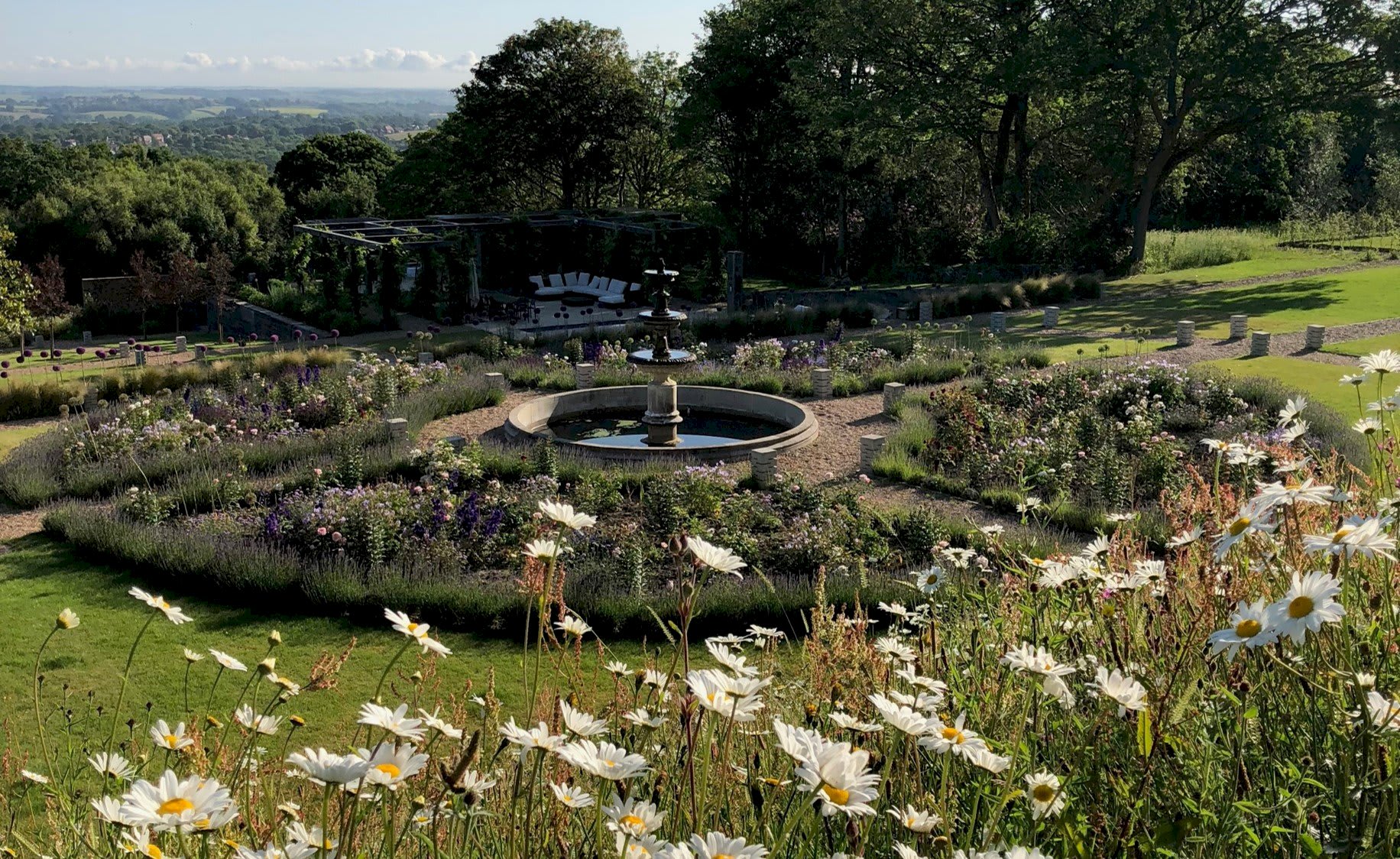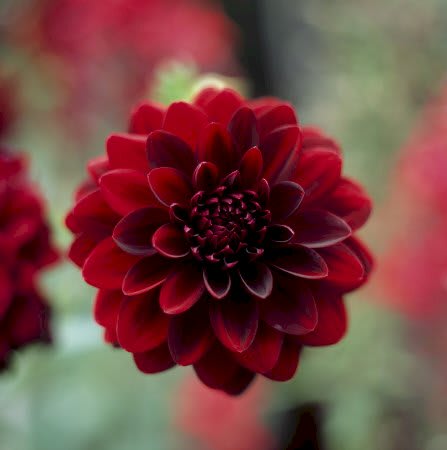We tend to think of gardens in all their colourful summer glory, but now’s the time to get planning for a fine display next year….
As the weather gets colder and days turn to night much more quickly, it might not seem the best time of year to be thinking about your garden, but in fact getting ahead now will make all the difference come next spring, especially if you want to plant biennials or perennials, rather than simply a range of annuals which will just flower once.
Soil, too, needs prepping: if it’s a new site, you’ll need to double dig and remove all perennial weeds and pests, then condition the soil with compost and mulch so that it’s nutrient-rich when you come to put your plants in.

Garden designer Christopher Edgar, who trained at the prestigious Inchbald School of Design, has clients all over southern England and is a big fan of working backwards. “It really helps if you have an idea of what you want your garden to look like eventually. Commit this to paper, but don’t be a slave to it, as changing your mind is absolutely fine. After all, it is you and your family that are going to enjoy the garden.”
As with any design project, it’s worth scouring gardening magazines and the internet – particularly sites like Pinterest – to identify the style of garden you like, whether it’s a mass of cottage garden flowering or a more minimal, foliage-based look. We’re blessed with some fantastic gardens to visit in this part of the country, including Waterperry Gardens (a brilliant example of year-round planting) and Broughton Grange in Oxfordshire and, in Gloucestershire, Barnsley House and Hidcote Manor. Sissinghurst in Kent and Great Dixter in East Sussex are other inspirational locations, having been created by some of the 20th-century’s most famous gardeners, including Christopher Lloyd and Vita Sackville-West. Another benefit of visiting local gardens is that the soil will often be the same as in your own garden, so it’s a useful way to see what may or may not thrive.
Christopher also suggests planning and working in stages. “Breaking the work into manageable sections is a great way to spread the cost and effort. If you can afford to get the hard landscaping done first I would encourage this, as it gives immediate structure and can be much more disruptive doing it later.” Another, often-neglected, aspect is that of height. Christopher says: “Think about how you want to ‘feel’ in your garden, and the impact of height around you, be it structures like pergolas or trellis, or tall plants like hedges, trees and shrubs. Lower-level planting is much easier to change and tweak in the medium term but moving that magnolia in 10 years’ time is a different proposition.”
BUT WHAT TO PLANT?
Much of your decision-making will depend on how high or low-maintenance you want your garden to be, but Christopher says that one of the easiest ways to get year-round, cost-effective colour and interest is by using bulbs. “Now is a great time to plant late-winter and spring-flowering bulbs like snowdrops, daffodils, hyacinths and tulips. Follow these with a variety of alliums through the summer and cyclamen and nerines into the autumn.” Planting in pots is another simple solution as you can easily move them round and position them in the borders to fill gaps or add colour.
One important facet often overlooked is to check your soil type, the direction in which the garden faces and how much light it gets, as all of these factors will influence which plants will do well. To an extent you can change your soil, but it’s much easier to choose plants that are suited to your garden: Mediterranean plants that love sunshine and dry conditions such as agapanthus and lavender will struggle in sticky clay soil, whereas these conditions are perfect for honeysuckle, roses, lilac and alchemilla.

Aim to get a mixture of different heights, shapes and colours, remembering that many plants flower during the summer months, which could leave your garden lacking in interest throughout the year. Plan for things to be in flower most of the year – or add interesting foliage and berry shrubs such as Japanese maples, sumachs and cotinus, or plants such as callicarpa with its bronze leaves and purple berries for autumn and winter.
When planting, work to the rule of odd numbers and always plant three or five plants together. Grouping them can add much more impact than spacing them out singly, but of course you need to allow room for eventual spread and height, as many plants don’t take kindly to being moved.
Colour combinations can be tricky, although these days, the old-fashioned rules have pretty much gone out of the window and flowers such as dahlias and crocosmia that were considered dated and gaudy a decade ago are now found in the most stylish arrangements. Remember, though, that less is usually more: chic white and cream, accented with blue and purple is always elegant, but a hot border of reds, oranges and yellows can be striking and modern.
Another important aspect of any garden is scent. There are few things more lovely than catching a whiff of jasmine, old-fashioned roses or tobacco plants on a summer’s evening, or the smell of viburnum, box, mahonia or witch hazel in the colder months.
And, finally, don’t forget the bees. Climate change and use of pesticides is causing a dramatic fall in numbers which could have dire consequences for food supplies as no bees means no pollination, not to mention honey. So keep things sweet by planting drifts of wild flowers (also easy maintenance) as well as bee magnets such as foxgloves, snapdragons, sunflowers, lilac, buddleja, roses and lavender.

To find out more about garden designer Christopher Edgar, visit christopheredgargardendesign.com











